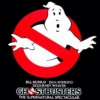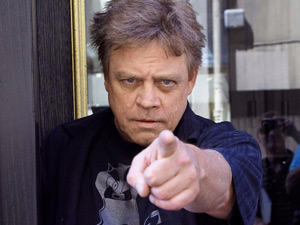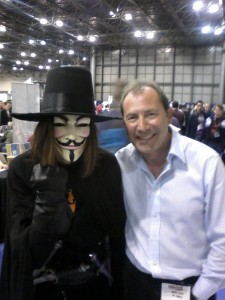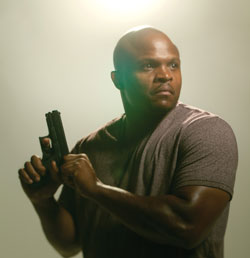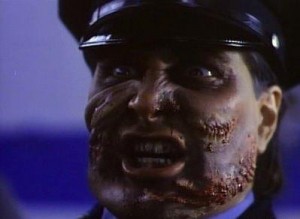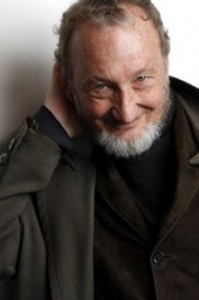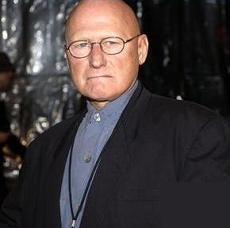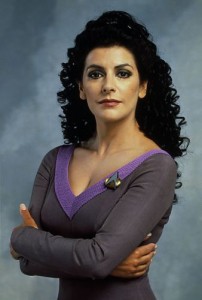Mark Hamill may be known best for playing Luke Skywalker in the original “Star Wars” trilogy. He is also the voice of The Joker for the last 20 years, starting with “Batman: The Animated Series”. Mark is taking on his most challenging and unique role yet, as Crow, in his new film “Sushi Girl”. I highly recommend this film, as it is one of my favorite films of the year. It is being released on VOD on November 27, 2012, in advance of it’s theatrical release on January 4, 2013. Media Mikes had the real pleasure of chatting with Mark about this amazing performance and how he put himself into that role. We also got to chat a little bit about his voice work and what he has planned next.
Mike Gencarelli: Take us through the how you ended up working on “Sushi Girl”?
Mark Hamill: They sent me the script; I read it and liked it a lot. But initially I couldn’t see myself doing it. I couldn’t imagine it. I was trying to get other things off the ground and sort of forgot about it. Then it came down to “Yes or no…Are you in or out?” I was thinking maybe it was a little too extreme. It seems crazy now that I did this but I turned it down. That was the easy way to deal with the troubling aspects of the screenplay. After a week or so I reconsidered, I am lucky they didn’t go to anyone else in that time. What happened was, I turned it down but didn’t feel good about it. So I asked my kids for help. Nathan was busy but I had my son Griffin and my daughter Chelsea read it, just to get their reactions. I need the reactions from twenty-somethings since I don’t have access to those demographics. Griffin didn’t think it was that violent like torture porn or gratuitously violent. The violence is part of the movie like in “Reservoir Dogs”. We are showing the underbelly of the ugly unsavory low-life kind of crime. So I agreed with him. But the one that really got to me was my daughters comment. She said “I heard you over the years saying that you had to go to Broadway to get character parts or the only really good character parts you got in film/TV are in animation like the Joker…if you turn this down then don’t complain anymore, you should be flattered they wanted you for the part to begin with”. It took a certain amount of imagination for them to even think of me for Crow at all. Ironically, when I asked them why they wanted me they said “Well if you can play a psycho like the Joker in animation, why not do it in live-action.” I decided to read it again but this time in character as Crow and not as Mark Hamill and that made a world of difference. So I told them I had to do it and luckily I got in under the wire. I really believe in this movie and I really want it to get the recognition it deserves.
MG: Where did you get your inspiration for the twisted yet perverted Crow?
MH: Obviously, most everything is in the screenplay but in terms of who I was using and how I got into the part and got inside the characters head, I used a few people that I used to work with in New York. I don’t want to use their names since they are not psychopath killers [laughs], but more in terms of their dark sardonic humor. There was a guy that was my understudy in a musical I did on Broadway and it was that sort of cynical snarky humor that Crow has, I took from him…and also various other people in my life. I loved the fact that we came up with a visually arresting look for the guy. I thought he should just show up and people should think that “There is something wrong with this guy”. The hair was one of those things that evolved overtime. At first I thought if I should be bald with a little Van Dyke beard and an earring or I thought maybe ponytail, since that is always creepy to me on a guy. Eventually, we went from bald to 180 degrees from that, since Tony (Todd) was bald. That hairdue might work for someone that is in a grunge band in Seattle or a surfer in his 20’s but it is just age inappropriate on a man like this. Then he has the three piece suit, which looks sort-of normal in the middle and then those tennis suits, which are more appropriate for a little boy. Visually there is just something that is so disturbingly wrong.
MG: For people that know you as Luke Skywalker and the voice of the Joker; what is this film going to do to your image for them?
MH: That is something that I have wanted to do for as long as I can remember. When I was a little boy and all the classic Universal Monster films came on. I admired all those actors like (Boris) Karloff and Lou Chaney Jr. & Sr. I loved the idea of hiding behind a completely different visual persona. It gives you great strength. You look in the mirror and it is not you. So you have to let go of your ego. In the film, I look awful. I look like five miles of bad road. Again, to look in the mirror and see a different character liberates you to make different choices that you wouldn’t originally make if you were Mark Hamill trying to look as good as you can. I love that about it. One of the greatest compliments I got about the role was when the producers showed it to some prospective buyers and when the movie was over, they asked “Where was Mark Hamill?” [laughs]. I mean that is the greatest compliment that I can get.
MG: Tell us about working with this phenomenal cast?
MH: You never can be sure what is going to happen. Not only did every cast member get along perfectly, there were no feuds or fights or egos involved. Everyone worked as a team and that included the crew. We were treating this like the little movie that could. It is idiosyncratic. It’s atypical. It’s quirky. But it is something special. It was just a joy to go to set every morning and you honestly cannot say that about every movie or TV show you work on. This is a cast that has gotten together for BBQ’s, birthday parties etc since filming. You get this real family feeling about it and that is not common at all in this business.
MG: The torture scenes in the film are quite a challenge to watch; were you ever concerned about it going to far?
MH: Yeah of course, from when I first read it. Let me tell you I have been married to a dental hygienist for more than 30 years and when I saw the extreme dental violence in this film, I thought there was no way I could do it. My wife is the woman that says “May The Floss Be With You” [laughs]. I couldn’t also see how I can film it without upsetting myself. I am quite squeamish about certain things and things dealing with teeth is one of them. During filming it, I am in character and Crow is really getting off on it. So I had to stay in character but Noah (Hathaway) was so realistic with these blood-curdling screams. That and the chopstick scene were definitely the hardest to shoot for me.
MG: After your likeness was used in the Mark Millar series, tell us about your recent casting in film adaption of “The Secret Service”?
MH: Mark contacted me via email and wanted to know if he could use my likeness in a comic book and beyond that to kill me in it. Well I thought that it was a very interesting idea. I am a huge fan of his and Dave Gibbons from “Watchmen”. I have a great friendship with him now. He asked me if I wanted to be in the movie and I said “Sure”. I don’t know what the details are yet. But it sounds like a lot of fun. The last time I played myself was in “The Simpsons”, back in 1998. It is very unnerving to play yourself because you have to analyze “Well who am I?”. I really don’t think about myself except in the roles I play. When I was getting ready to do “The Simpsons”, I was walking around the house asking “Do I sound like this” or “Do I sound like this” (both in different voices). I became very self-conscious but once I saw the advance concepts for the comic book from Mark, I thought it was such a brilliant concept combining the fantasy world of James Bond and contrast that with the drab lower-class English background that this guy comes from. It is such a wonderful paradox combination of elements in and of itself. It is not a major role but I never look at things like they need to be about me. I think about if it is good and if it is good I want to be a part of it. As far as I know, it is all a-go, we haven’t signed contracts or talked about a deal but I am sure it is going to happen.
MG: After stealing the show in “Sushi Girl” and no retired from Joker, do you plan to tackle more live-action roles?
MH: I am in collaboration with Amber Entertainment to finally get “The Black Pearl” made as a feature film that I would direct but not perform in. That is my main goal at the moment. If someone sees Crow and thinks of me in a different way and offers me another idiosyncratic character role, I would be thrilled to do it. I don’t have any direct plans but I also didn’t plan on “Sushi Girl” coming my way either. So you never know.
MG: I am also a big fan of your work on “Metalocalypse”.
MH: That is a very unusual show. We are heading into our fifth season of that show and that is one of the four that I am working on right now. Then there is Disney XD’s “Motorcity”. “Regular Show” just won an Emmy, congratulations to the people behind that show! I am also on the “How to Train Your Dragon” TV series “Dragons: Riders of Berk”, which is doing very well. I play Alvin, a big stupid Viking on that show. But I love it. He doesn’t think about himself as stupid or a villain. He is a real fun character to play. He wasn’t in the movie but was created for the TV series. I get to channel the crew from “Star Wars” since they were from the East End of London. They were all great fun to be around and I love the music of their accents. To be able to channel those guys is great fun. It is like getting into an amusement park car and riding along in someone else’s persona. That is why I don’t like playing myself…I am boring [laughs] but all the characters I get to play are more interesting.
MG: When we met at Star Wars Celebration VI, a young child came up to you in passing and asked you to do the voice of the Joker and you did. I will never forget the look on his face. What do you enjoy most about meeting all your fans?
MH: Going and meeting so many people that care some much about something that you been involved with it is really overwhelming. I don’t take it for granted at all. It is not something that I come face-to-face with everyday. In that context it is so easy for me to make that little kids day by just saying “I want money first” (in Joker’s voice). It is just so much fun. It is like a magician being able to just do a slide of hand magic trick that the kid will remember many moons to come. That is one of the perks of this business and one of the reasons why I got into it. I enjoy it. I love making people laugh and I love making people happy. I wasn’t motivated by fame or money. I wanted to do something that I enjoyed doing and I am so grateful. The fact that I have been able to do some many of those things I love, whether it the seven shows I have done in NY or the Regional Theater or the numerous cartoons. I grew up loving cartoons. So I am just so grateful to get a chance to keep doing the things I love.
